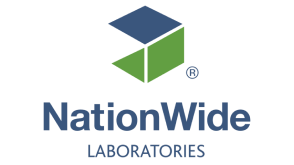Digital pathology includes the acquisition, management, sharing and interpretation of pathology information (both slides and data) in a digital environment. Glass slides are captured with a scanning device, providing a high-resolution digital image, which can then be shared and used for diagnosis (Royal College of Pathologists, 2022). Although telepathology – the electronic transmission of pathological images for review and diagnosis – has been used for many years, the use of whole slide imaging and the digitisation of glass slides is a newer and fast-evolving diagnostic technology (Cross et al., 2018).
Digital pathology has the scope to transform veterinary pathology, not least through the challenges of the COVID-19 pandemic and the current staffing issues
Digital pathology has the scope to transform veterinary pathology, not least through the challenges of the COVID-19 pandemic and the current staffing issues. With the implications of this potential, Improve Veterinary Practice caught up with Andrew Pritchett from NationWide Laboratories (NWL) to discuss its innovative digital pathology offering and development of a digital pathology centre of excellence to support veterinary diagnostic services.
What are the main issues facing the veterinary diagnostics sector currently?

One issue the veterinary sector is facing and a driving factor for NWL to develop our digital pathology offering is the global shortage of veterinary pathologists. Veterinary pathologists are employed in a range of sectors, and increasing demand across these sectors has led to difficulties in recruitment.
The ability for NWL to scan and digitise slides for histology and cytology means we can make workflow efficiencies by making the process less labour intensive and increasing our access to remote working pathologists who can access the images for diagnosis from the server. Moreover, with the rapid referral of cases, not only is there the opportunity for faster diagnosis, but it gives the business access to a larger staffing pool – including potentially greater ease of access to expert advice. It also offers a better work–life balance for our pathologists.

How can this help address wider issues, such as recruitment and training, in the veterinary diagnostics sector specifically?
Diagnostic histopathology and cytology are very dependent on reviewing slides and then discussing interpretation with clients and colleagues. The training of new staff is often undertaken at a multi-headed microscope and requires many archived training slides. In contrast, by using our scanner, digital slides will be of greater resolution and can be rapidly shared with other specialist pathologists, trainees, clinicians and students anywhere in the world. We will be able to continually build digital archive training cases and share this information to support learning and development more generally.
Another benefit is found when giving second opinions, which can be achieved in minutes with the sharing of digital slides. Measurements of surgical margins and more precise information can be ascertained using the more detailed, calibrated and standardised digital images instead of the standard glass slide. Side-by-side reviews of multiple digital slides can be more easily performed using the digital pathology platform, allowing for more efficient diagnosis.
For those who may need a refresher, what are the typical pathology solutions on offer and how does a digital pathology scanner stand apart from them?
Histology and cytology have routinely been undertaken by a pathologist using microscopes. But the use of slide scanners has developed over the last few years, and there is now a wide range of scanning solutions available in the veterinary market. These range from the most basic with a camera taking images directly from the microscope, to the next level with a small single slide, to lower solution scanners and, finally, to the Pannoramic 1000RX – NWL’s digital offering.

The Pannoramic 1000RX is the largest capacity whole-slide throughput scanner currently on the market, capable of scanning 1,000 slides at a time. As well as speed, NWL has purchased the water immersion lens to ensure we can produce the highest-quality images currently available in the UK. The water immersion lens is equivalent to the high-magnification oil lens on the standard microscope. An additional benefit of the scanner’s water immersion lens is that the magnification can surpass that of a standard microscope using digital enhancement.
It is also one of the most efficient scanners available due to its innovative technology. The technology ensures only the tissue of interest is scanned with no blank space, keeping the image resolution and quality high and file sizes small. This is a benefit when sharing results with pathologists and clients.
What diagnostic areas can it be used for?
The testing areas typically gaining the benefit of digital scanning and its efficiency are histology and cytology. NWL plans to use the scanner for those areas; however, with the high-resolution water immersion lens, we will review haematology slides too. This image quality will also mean that we will be able to develop artificial intelligence (AI) algorithms to increase the efficiency of workflows based on these images.
The AI feature sounds intriguing; can you tell us more about these possibilities and how you can “teach” the scanner?
The AI and machine learning possibilities for the laboratory are extremely exciting for both diagnostics and research. We are working on a system to teach the algorithm to recognise different cell types from the scanned image of a slide. We can teach the AI to look for tumour cells, for example, and the AI can detect cells of interest in the entire slide as soon as it has finished scanning. It can then flag that slide for review by a pathologist.
AI and machine learning possibilities for the laboratory are extremely exciting for both diagnostics and research
Further, features observed in a glass slide can often be difficult to locate when it comes to review by others, whereas digital slides can be easily annotated for future discussion. This not only increases the accuracy, but also dramatically increases the speed of detection.










